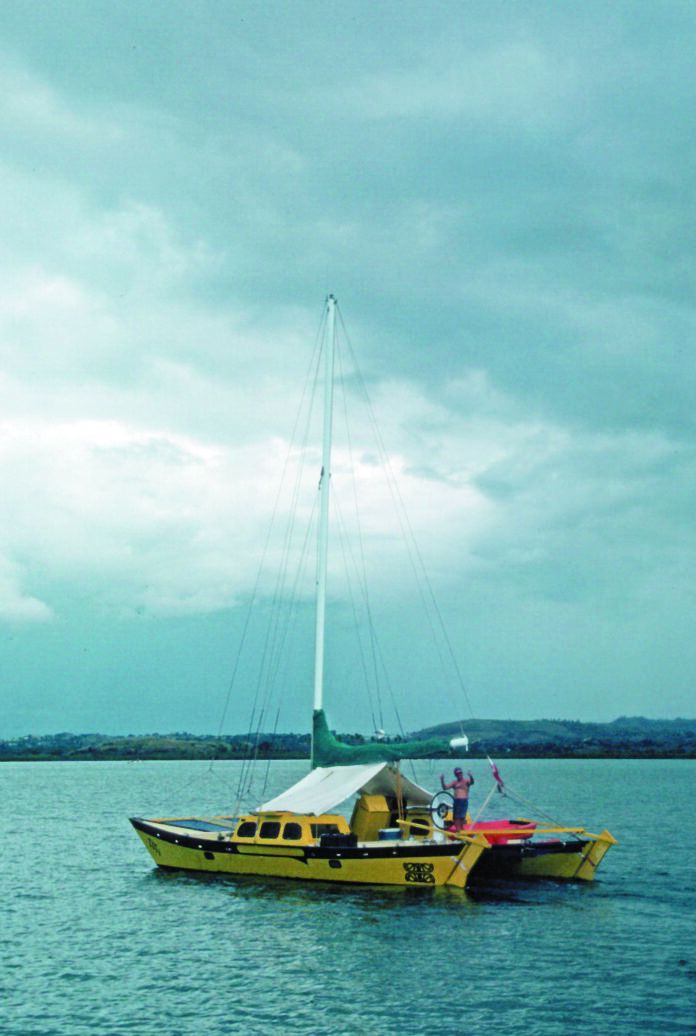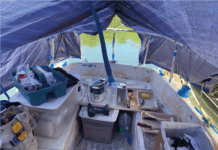During our decade of cruising, my partner and I spent most of our days within 20 degrees of the equator. In many tropical ports the temperatures pushed to almost unbearable levels. I recall specifically the Solomon Islands, Guam, and Thailand, where the glue holding my shoes together literally melted. Over time, we adapted some effective strategies for staying cool. Scrolling through the archives, I was able to find several articles to help us all ease into the season of heat.
SIESTA
The Spanish have given tropical sailors from workaholic nations a wonderful gift—a guilt-free afternoon nap. Rise early and spend the hottest hours in the shade reading, napping, or stitching sails. To keep your bunk cushions smelling fresh in humid climates, see my Inside Practical Sailor blog post “Stop Boat Mattress Cushion Mildew.”
HYDRATE
Coconut water is a great source of electrolytes. Drinking nuts are bulky to store, but the popularity of packaged coconut water means it’s available almost anywhere. We tested a few of these drinks back in 2010 with a report on staying hydrated at sea (see PS June 2010 “What is the Best Way to Stay Hydrated at Sea?”).
SHADE
A good awning is essential for summer. Sunbrella remains our favorite choice of material for the long haul, but some challengers like Stamoid and Weather Max have their converts (see PS December 2011, “Functional Fabrics”). Taylor Made, Crawford Marine and other companies offer domed designs that stow compactly (see PS October 2013, “A Reversible Awning”). Technical Editor Drew Frye’s dual-purpose awning is perfect for low-budget sailors (see PS June 2021 “Turn that Riding Sail into an Awning”). Sailrite (www. sailrite.com) also offers kits for the DIY stitcher, and our oldie-but-goodie from 1999 (search the PS website for “The Canvas Air Conditioner”) has step-bystep directions for making one.
VENTILATE
Fans and a Windscoop hatch vent were lifesavers for us in the tropics. Frye recently explored the science of bringing air below (see PS September 2020, “Simple Tips to Improve Boat Ventilation”), and compared the effectiveness, of cowls, vents, and dorade boxes. We’ve also tested the ATN Dorcap, one of a few hatch vent designs that you can leave up in the rain (see PS May 2015, “Gear Fit for Summer Sailing”).
AIR CONDITIONING
Marina hoppers can take advantage of climate control aboard. We recently covered AC selection and installation (see PS June 2018, “Air Conditioning for Sailboats”). We’ve also researched the possibility of using compact units sparingly while at anchor with little, if any, reliance on a generator (see PS June 2019, “Air Conditioning at Anchor”).
MOVING
Of course, you could simply do what liveaboard sailors have been doing for generations. When the lower latitudes become too hot, make your way to cooler climates—maybe Seattle, or Portland, Oregon, or . . . Miami?
Where ever you go, don’t leave your shoes out on the dock, just in case.








































